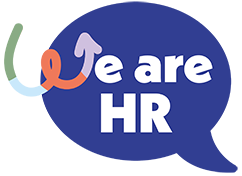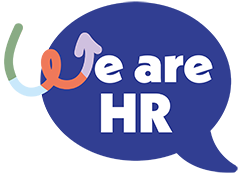Table Of Contents
- Performance Reviews: The Ultimate Guide to Effective Feedback
- Introduction
- Set the Stage for Success
- Specificity is Key
- Consider the Feedback Sandwich (But Use Caution)
- Embrace Two-Way Communication
- Focus on Behaviour, Not Personality
- Offer Solutions and Support
- Document Everything
- The Power of Follow-Up
- Additional Tips for Delivering Effective Feedback
- Conclusion
Introduction
Performance reviews are a crucial aspect of employee development. They provide a structured environment for discussing accomplishments, pinpointing areas for improvement, and setting goals for future success. But the true power of performance reviews hinges on one key element: feedback.
Ineffective feedback can turn a valuable development tool into a dreaded formality. When done right, however, feedback becomes a catalyst for growth, propelling employees to new heights and fostering a thriving company culture.
So, how can you ensure the feedback you deliver during a performance review is impactful and transformative? Here are some key strategies:
Set the Stage for Success
Approaching a performance review with a positive attitude sets the tone for a productive conversation. Begin by acknowledging the employee’s accomplishments and strengths throughout the review period. This creates a foundation of trust and demonstrates your appreciation for their contributions. Here are some additional tips for setting the stage:
- Schedule the review in advance
- Choose a private and comfortable location
- Review the employee’s self-assessment
Specificity is Key
Vague generalities leave employees confused and unsure of how to improve. Effective feedback hinges on specifics. Provide concrete examples of both successes and areas for improvement. Quantify your observations whenever possible, using metrics or data to support your points.
For example, instead of saying, “Your communication skills need work,” try:
“In the recent client presentation, you used technical jargon that may have been confusing to the audience. In the future, consider using simpler language and tailoring your explanations to their level of understanding.”
Consider the Feedback Sandwich (But Use Caution)
The “feedback sandwich” technique involves buffering criticism between layers of praise. While this approach can be effective in some situations, it’s not a one-size-fits-all solution. Overuse can make praise feel insincere, and burying critiques can obscure their importance.
Here are some alternative methods for delivering constructive criticism:
- The Start-Stop-Continue Model: Briefly acknowledge positive behaviours you want the employee to continue, then highlight areas for improvement, and conclude by proposing solutions and next steps.
- The Appreciation-Feedback-Appreciation Model: Express appreciation for the employee’s effort, then provide specific feedback, and conclude by reaffirming your support and confidence in their development.
Embrace Two-Way Communication
Performance reviews shouldn’t be a one-sided affair. Encourage the employee to share their perspective on their performance and any challenges they’ve faced. Active listening fosters trust and can uncover underlying issues impacting their work.
Here are some tips for promoting effective two-way communication:
- Ask open-ended questions: This encourages the employee to elaborate on their experiences and goals.
- Practice active listening: Pay close attention to both verbal and nonverbal cues.
Acknowledge and validate their concerns. Let them know their voice is heard and their input is valued.
Focus on Behaviour, Not Personality
Feedback should target actions, not personality traits. Instead of saying, “You’re disorganised,” try, “The missed deadlines on Projects X and Y suggest there may be room for improvement in time management skills.” This approach empowers employees to take ownership of their own development.
Here are some additional tips for focusing on behaviour:
- Use “I” statements: “I noticed that…” phrases and observations less confrontationally.
- Focus on specific actions: Describe the behaviour you observed, not the employee’s character.
- Explain the impact of the behaviour: Help the employee understand how their actions affect the team or organisation.
Offer Solutions and Support
Great managers don’t just identify problems; they offer solutions. Collaborate with the employee to set SMART goals (Specific, Measurable, Achievable, Relevant, and Time-bound) and provide the resources and support needed to achieve them. This demonstrates your commitment to their success.
Here are some ways to offer effective support:
- Provide training and development opportunities: Equip the employee with the skills and knowledge they need to improve.
- Connect them with a mentor or coach: Offer guidance and support from a more experienced colleague.
- Delegate tasks that challenge their skillset: Provide opportunities for them to learn and grow.
Document Everything
Detailed records of performance review discussions benefit both managers and employees. They provide a clear reference point for future evaluations, fostering accountability and transparency.
HR software streamlines this process by creating a central hub for storing performance review notes, goals, and development plans. This ensures everyone is on the same page and facilitates regular check-ins to monitor progress.
The Power of Follow-Up
Effective feedback extends beyond the initial review meeting. Schedule regular follow-up discussions to track progress and offer ongoing guidance. This reinforces accountability and demonstrates your investment in their development.
Here are some tips for conducting effective follow-up meetings:
- Schedule follow-ups at designated intervals: This could be weekly, monthly, or quarterly, depending on the employee’s needs and the nature of the goals.
- Focus on progress, not perfection: Celebrate small wins and acknowledge the effort being made.
- Be prepared to adjust goals as needed: Circumstances can change, so be flexible and willing to adapt the development plan.
Additional Tips for Delivering Effective Feedback
Focus on the future: While past performance is important, the goal is to guide future development.
Be timely: Provide feedback as close to the event as possible to maximise its impact.
Be respectful: Maintain a professional and respectful demeanour throughout the conversation.
Be objective: Avoid letting personal biases cloud your judgement.
Tailor your approach: Consider the employee’s individual learning style and preferences.
By following these strategies, you can transform performance reviews from a formality into a powerful tool for employee development and organisational success. Remember, effective feedback is an ongoing process, not a one-time event. When delivered thoughtfully and consistently, it has the power to propel your employees and your organisation to new heights.
Conclusion
Performance reviews offer a valuable opportunity to strengthen employee development and drive organizational success. By mastering the art of delivering effective feedback, you can transform these reviews into a catalyst for growth, motivation, and achievement. Remember, feedback is a two-way street. When you actively listen to your employees and create a safe space for open communication, everyone wins.


